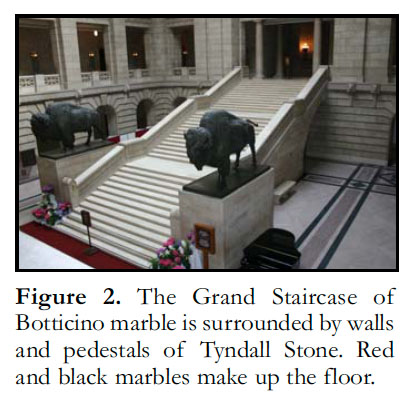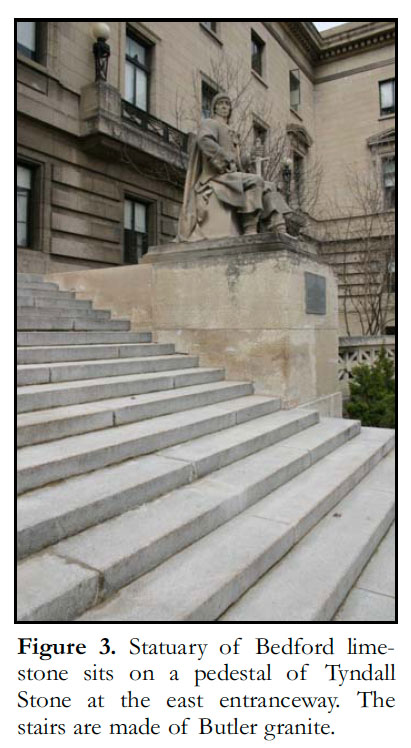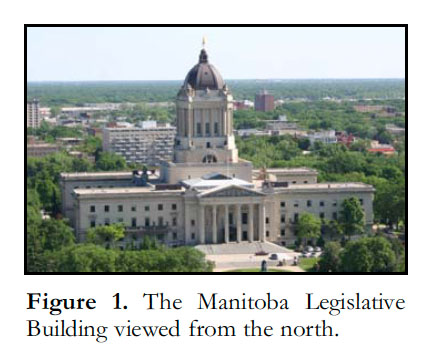GAC-MAC 2013: Field Guide Summary
Geology of the Manitoba Legislative Building
FIELD TRIP OBJECTIVES
1 The Manitoba Legislative Building (Fig. 1) is a grand neoclassical structure located near the banks of the Assiniboine River in central Winnipeg. It rests on glacial Lake Agassiz clays, but its mass is supported by caissons that extend down to bedrock. Brick bearing walls are supported by a steel structure that rests on the caissons. Construction started in 1913 but was hampered by World War I, financial problems and problems with defective caissons. The Legislative Building was officially opened in 1920, and provides a unique case history into the geologic controls on foundation design.
2 Dimension stones from selected localities across North America and Europe decorate the bearing walls, floors and stairways of the Legislative Building. The building offers some of the best exposures of Manitoba Ordovician Tyndall Stone including classic burrow mottling and macrofossils. Early Paleozoic Appalachian marbles, from Tennessee to Quebec, are represented on hallway floors, steps, risers and landings. Botticino marble from the northern Italy is well exposed on the grand staircase (Fig. 2), and an Ordovician black marble adorns the walls of the legislative chamber. The steps to the entranceways are underlain by Neoarchean Butler granite from northwestern Ontario (Fig. 3).
 Display large image of Figure 2
Display large image of Figure 2 Display large image of Figure 3
Display large image of Figure 33 This trip will focus on the unique geological characteristics of the several types of dimension stone, the processes recorded in their formation, and the paleoenvironmental conditions under which the rocks formed. We will also discuss the history of the building, its construction and foundation conditions.
OTHER INFORMATION
4 This half-day field trip is designed for the non-specialist. Emphasis will be placed on the engineering geology of the building and the geologic processes recorded in the different types of dimension stone. The Legislative Building is a short distance from the Winnipeg Convention Centre where the conference is being held. We will depart from the main entrance of the Convention Centre and walk to the Legislative Building. Most of the field trip will be touring inside the building, but we will spend some time outside. The time spent outside will be dependent on weather.
